Generations and trends: development of infantry ATGMs
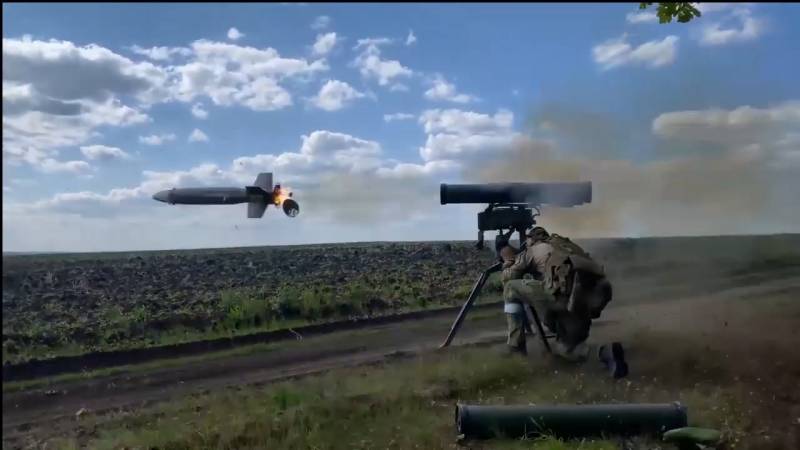
Combat use of ATGM "Kornet" - the most advanced product of the 2nd generation. Photo by the Ministry of Defense of the Russian Federation
Any modern army should be armed with anti-tank missile systems with guided missiles designed for infantry. Such weapon allows you to deal with well-protected armored objects or structures. For obvious reasons, the development of the ATGM direction is a continuous process and regularly gives new results. At the same time, a number of important trends of various kinds are observed.
A question of generations
According to the generally accepted classification, all anti-tank systems, including those intended for infantry, can be divided into three main generations. Such a classification makes it possible to divide the entire mass of created complexes according to the level of development and applied technologies. According to her, the first generation includes the earliest developments of this class that have reached production and operation - the Soviet 9K11 Malyutka complex, the French SS.10, etc.
The key feature of the 1st generation was the extreme simplicity of design and the absence of any automation. The search for the target, the launch and guidance of the rocket were carried out manually by the operator. At the same time, objective limitations arose in terms of launch range and hit accuracy.
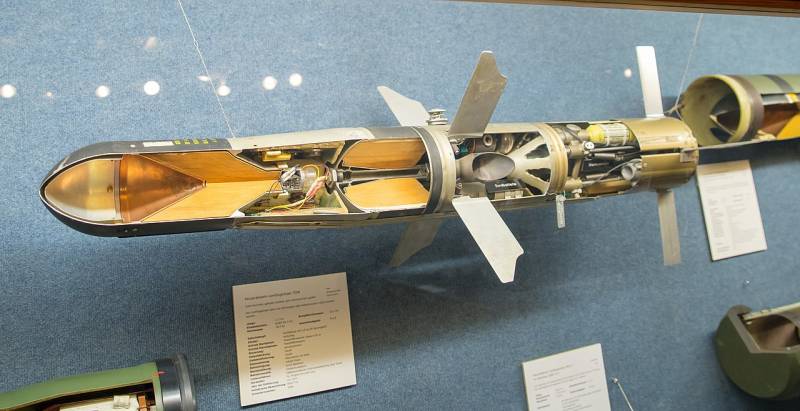
Cut-away layout of the American TOW missile. Photo by Wikimedia Commons
Already in the sixties and seventies, the first complexes of the 2nd generation appeared. At this stage, the creation and introduction of more advanced observation devices, as well as semi-automatic controls, began. Now the operator only has to look for the target and keep it in sight, while the flight of the rocket is controlled by automation using certain principles.
It is to the 2nd generation that most of the modern ATGMs in service belong. In our country, this generation began with the products 9K111 "Fagot" and 9K111-1 "Competition". The main modern development in this area is the ATGM 9K135 "Kornet" and its various modifications. Examples of foreign complexes include the American BGM-71 TOW or the French MILAN.
In the mid-nineties, the first complex of the next 3rd generation, the American FGM-148 Javelin, entered service. In the future, similar developments appeared in other countries. The main feature of these ATGMs is the presence of a full-fledged homing head on the missile. Thanks to this, the principle of "shot and forget" is realized, which gives certain advantages.
The advertising materials of foreign developers already mention the 4th and 5th generations of anti-tank systems. At the same time, the generally accepted criteria for these generations have not yet been formed, which gives a certain scope for imagination and marketing.
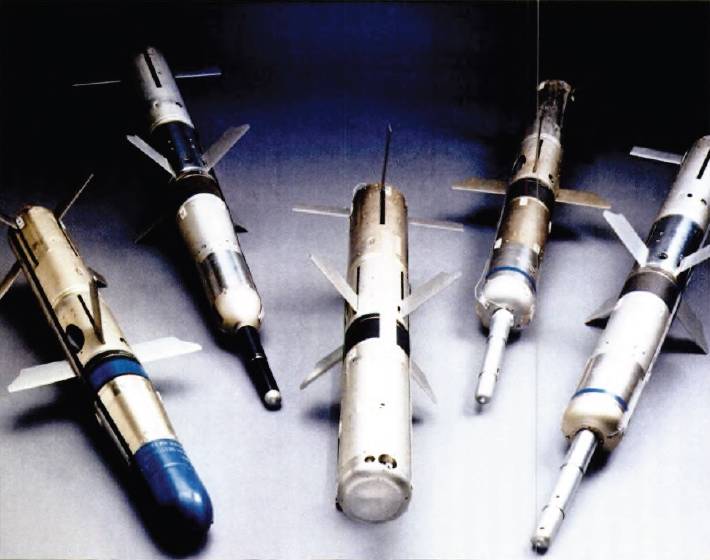
Missiles of various modifications for the TOW complex. Photo by the US Department of Defense
So, the Israeli company Rafael refers to the 4th generation some complexes of its Spike family. Part of the missiles of this line is equipped with an optical-electronic seeker and has a fiber-optic connection with ground-based anti-tank systems. This ensures both homing, incl. with retargeting in flight, and work under the direct control of the operator. By the 5th generation, "Rafael" refers to future complexes using artificial intelligence, etc.
Cost - efficiency
The appearance of weapons and equipment of a new generation usually leads to obsolescence of previous models and their gradual replacement. It was according to this scheme that at one time there was a transition from the first to the second generation of anti-tank systems. However, this did not happen with the appearance of the 3rd generation. For a number of reasons, products of the previous generation remain relevant and popular. A number of countries do not even plan to switch to the latest generation.
The reasons for this should be sought in the technical and economic features of the weapons of the last two generations. First of all, it is the question of price that matters. Thus, the export value of the advertised 3rd generation Javelin missile with seeker has already exceeded $200, while ATGMs of previous generations cost several times less. For example, in export contracts of previous years, a rocket for Kornet cost approx. 25-30 thousand dollars. The situation is similar with control units.
The difference in the cost of ATGMs of two generations is so great that it cannot always justify the technical advantages. At the same time, products of the FGM-148 type, due to the reduction in size, are even inferior to the ATGMs of the conditional previous generation in terms of basic characteristics. As a result, in comparison in terms of cost-effectiveness, it is the 2nd generation that is more successful.
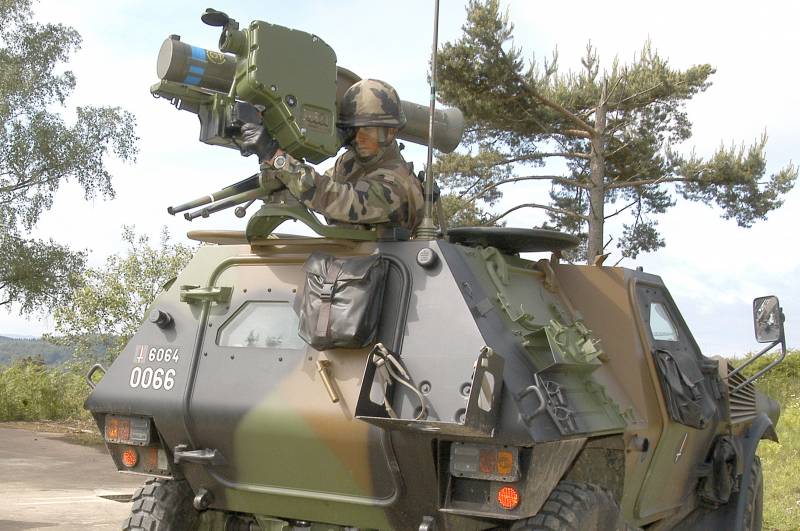
French MILAN on an armored car. Photo MBDA Systems
Management Development
The main innovation in the 2nd generation of ATGMs was control units with electronics capable of controlling target movements and missile flight. The consistent development of control units and the introduction of new technologies has become one of the foundations of progress in this area, and these processes are still ongoing.
At the early stages of development of the 2nd generation, the task was to ensure the all-weather and all-day use of the complexes. It was solved by introducing new optics with a night channel. Electronics were also improved, aimed at increasing reliability, speed, etc.
Separately, we should consider the development of ways to control the rocket. In the early complexes of the 2nd generation, the wired control method, borrowed from its predecessors, was retained. However, now the commands for the rocket steering machines were formed in the control unit and transmitted to the rocket via a thin unwinding cable. This method is technically simple, but vulnerable to external influences.
In a number of domestic and foreign developments, the wire was replaced by a radio channel. However, the radio command guidance system has become widespread only in anti-tank systems for land and air platforms. However, a successful replacement was also developed for infantry complexes. So, "Cornet" of all modifications is equipped with laser-beam control. In this case, the rocket flies independently along the laser beam directed by the control unit at the target. This method of guidance is more complicated than wired, but it is distinguished by increased reliability and noise immunity.
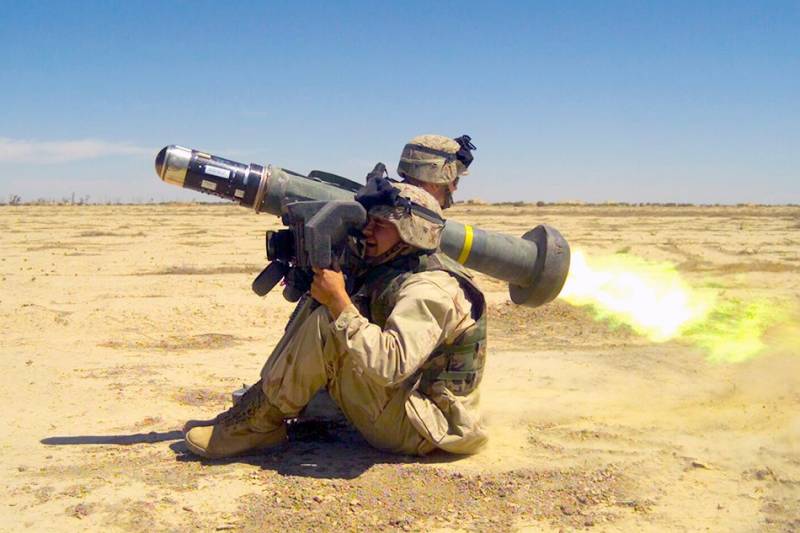
Shooting from ATGM 3rd generation FGM-148. Photos Lockheed Martin
The direct development of the ideas of the 1st and 2nd generations are the solutions laid down by the foreign industry in the hypothetical fourth generation. In the projects of the Spike family, a simple copper wire was replaced with an optical fiber, which allows organizing high-speed two-way communication between the rocket and the control unit. Such a connection can be used to introduce fundamentally new modes and capabilities.
Combat capabilities
As the name implies, anti-tank systems are designed to destroy armored targets and have a corresponding warhead. Almost all complexes use a shaped charge of one or another mass and configuration. At the same time, charges of this class are gradually developing, and in addition, alternative options for combat equipment are being offered.
Early anti-tank missiles carried a simple monobloc shaped charge. In recent decades, in connection with the development of regular and additional protection tanks, tandem warheads became widespread. In this case, the warhead includes a small-sized lightweight leading charge, the task of which is to defeat and disable the dynamic protection unit. The main charge passes through the gap formed.
Such warheads are intended to hit a target in a frontal or lateral projection, which have the best protection. Alternative solutions are proposed aimed at simplifying the task for the rocket. So, for one of the modifications of the TOW ATGM, a cumulative warhead of an inclined arrangement was developed, directed downward in flight. It is triggered when the missile passes over the target, and the cumulative jet hits the roof. The FGM-148 and some other modern products have a flight mode with a "slide" in front of the target - in this case, the hit also occurs in the weakened part of the armor.
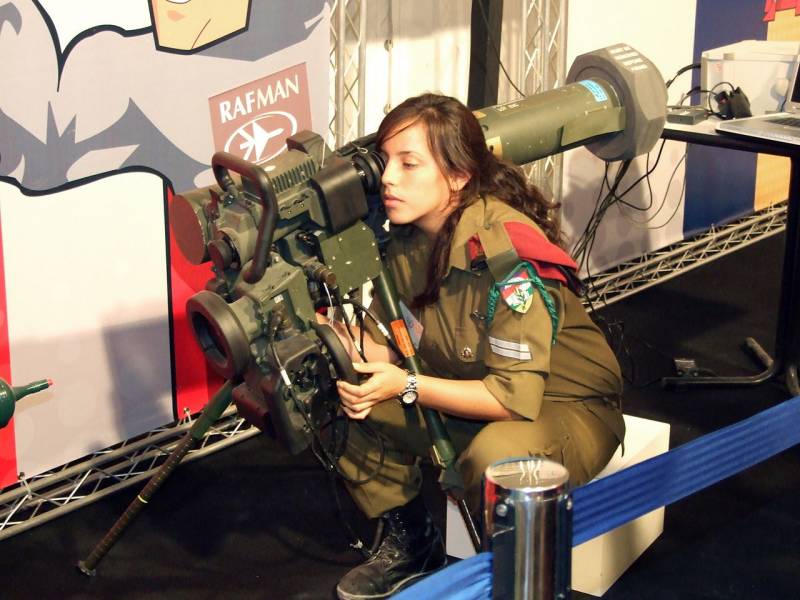
Israeli product Spike-LR, related to the 3rd generation. Photo by Wikimedia Commons
However, on the battlefield, ATGM crews face not only tanks. Accordingly, missiles with other combat equipment are required. So, in the course of the development of the Kornet complex, missiles with high-explosive and thermobaric warheads were developed. In terms of their impact, these charges are comparable to a 152-mm artillery shell. At the same time, the accuracy of the defeat was maintained at the level of the original anti-tank missile, and the launch range was also increased.
Today and tomorrow
Thus, for several decades of its existence, infantry anti-tank missile systems have come a long way. New components and solutions were created and implemented, thanks to which the tactical and technical characteristics improved, the principles of application changed and the overall efficiency increased. In addition, development processes have led to the formation of several full-fledged generations of such weapons with fundamental differences from each other.
The process of developing and improving anti-tank systems does not stop, and the industry of different countries regularly reports on new achievements in this area. As before, the purpose of new projects is to improve the basic technical characteristics. In addition, in advanced projects that receive the necessary advertising, we are actually talking about the rejection of anti-tank specialization in favor of versatility and the ability to work for different purposes.
Attention should be paid to the simultaneous existence of several generations of weapons. If the 1st generation is recognized as obsolete, then the second remains relevant, and the development of new samples of this kind continues. At the same time, many armies are operating complexes of the next 3rd generation, and the development of the 4th is already underway. What all these processes will eventually lead to, and what the generally accepted requirements will be in the 4th and 5th generations of anti-tank systems, will become known only in the future.
Information